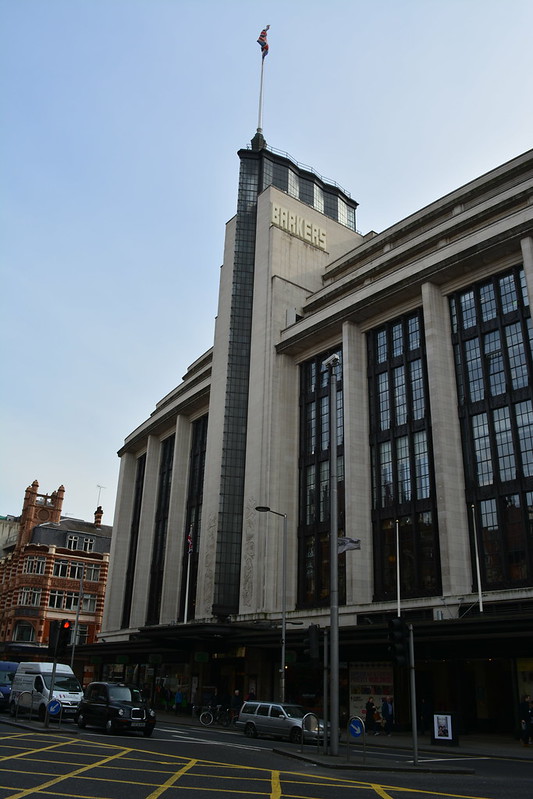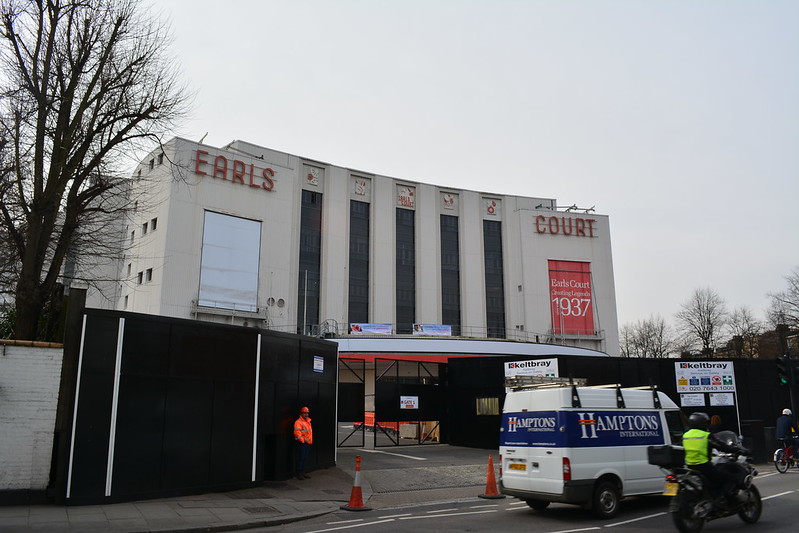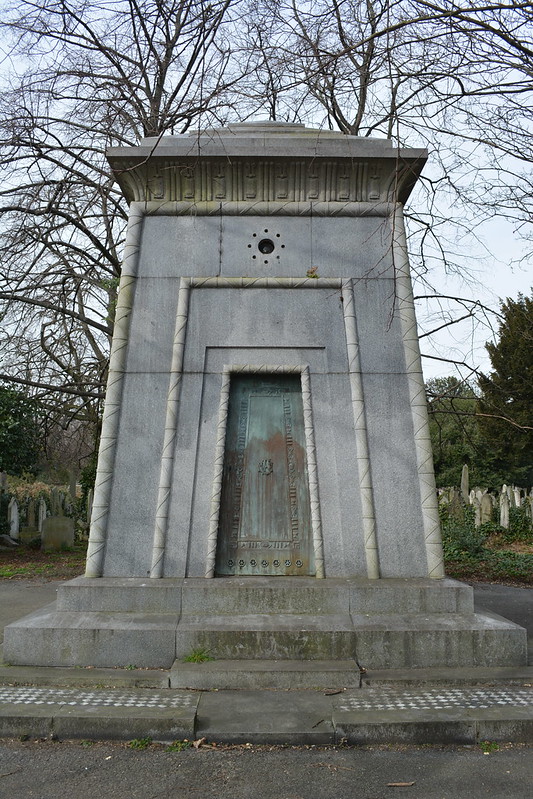Weather: Nice and sunny but with a bit of a lazy wind
Distance Walked: 20.8
Distance By Tube: 15.09
Stations Visited:15
Fantastic Place: West Brompton Cemetery
 |
| 15 Tube Stations on the leg of the walk |
For the second leg of my District Line walk I skipped a bit eastward so I could do the other north-south branch from Edgeware Road to Wimbledon, fifteen stations including a detour to take in Kensington Olympia on it's seldom used branch line from Earl's Court.
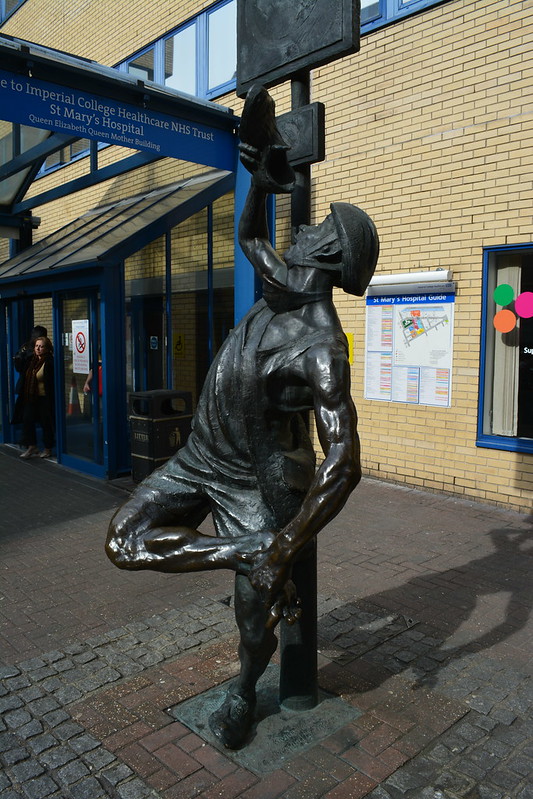
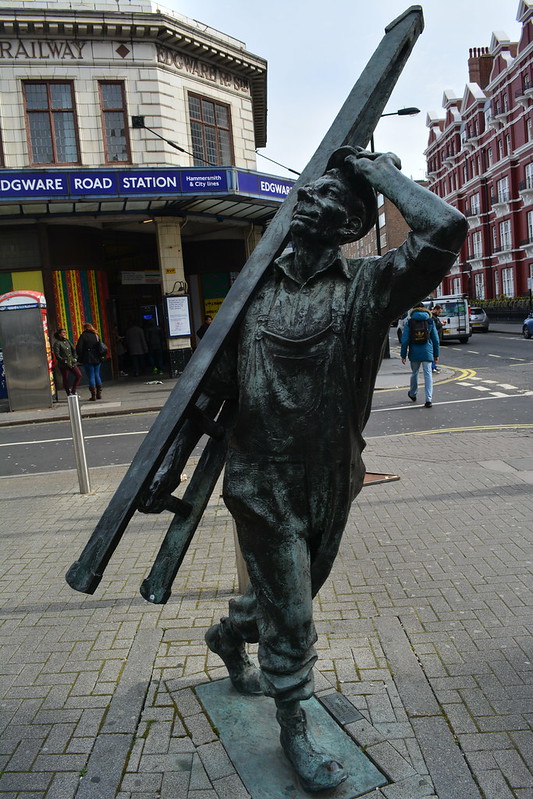 There are two Edgeware Road stations, this is the more attractive of the two and has what appears to be the standard, for this part of the line, pale cream glazed brickwork frontage. Interestingly this station was originally part of the Metropolitan railway but now serves the District, Circle and Hammersmith & City lines. Just outside the station was the first of two interesting pieces of public sculpture I was to see on this section of the line.
There are two Edgeware Road stations, this is the more attractive of the two and has what appears to be the standard, for this part of the line, pale cream glazed brickwork frontage. Interestingly this station was originally part of the Metropolitan railway but now serves the District, Circle and Hammersmith & City lines. Just outside the station was the first of two interesting pieces of public sculpture I was to see on this section of the line.The stretch down to Paddington Station passes through the sprawling buildings of one of London's teaching hospitals, St Mary's, very useful if you are playing a game of Pointless in your head trying to find words beginning with a vowel and ending with 'ology'.
Another sculpture outside of the hospital of a cyclist checking his shoe. Odd.
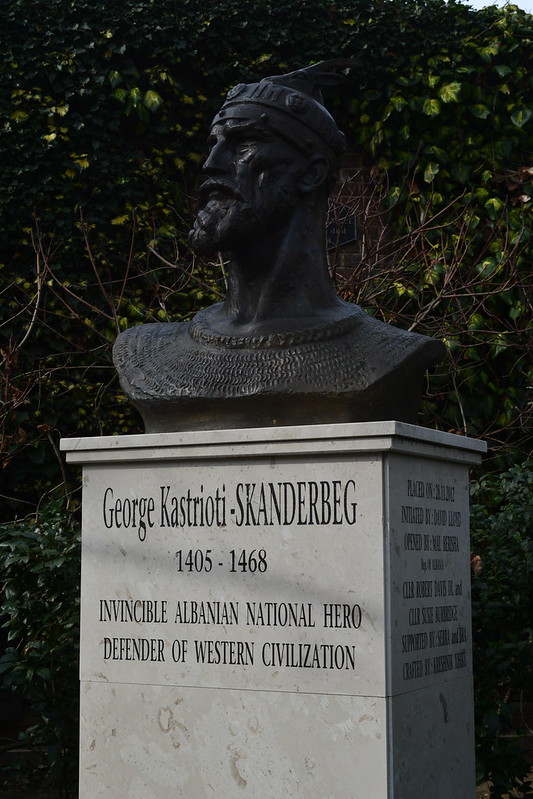 Through the seemingly endless streets of Bayswater lined with stylish mansion flats and squares filled with spring bulbs and early cherry blossom in shades of pink and white and on the corner of one of these streets, the rather fine bust of George Kastrioti-Skandburg.
Through the seemingly endless streets of Bayswater lined with stylish mansion flats and squares filled with spring bulbs and early cherry blossom in shades of pink and white and on the corner of one of these streets, the rather fine bust of George Kastrioti-Skandburg.Bayswater station followed soon after and I was soon in little Athens with a domed Greek Orthadox cathedral and lots of Greek grocery shops.
After Notting Hill Gate station my path took me along Kensington Palace Gardens, part of the Crown Estate, and signs told me in no uncertain terms not to take any photos. Again this was useful practice for Pointless as I tried to guess the embassy from the flag flying outside. Some were simple, Japan, Finland, Russia, others less so, Nepal for example. Israel's was probably the easiest to identify as it was the only one with two Met police officers armed with semi-automatic weapons standing outside.
I moved swiftly on...
High Street Kensington was busy as lunchtime was approaching and there were plenty of interesting buildings in the Art Deco style to admire as I headed back west towards Kensington Olympia. The most striking building was probably Barkers.
The old Commonwealth Institute is being knocked down / refurbished to become part of the design museum. It was one of the first museums I went to when I moved to London, an interesting building but prone to leaks if I recall correctly.
Kensington Olympia doesn't have a proper sign so I included in the montage the sign that gives it's original name Kensington Addison Road instead.
Heading south east the streets are busier and everything appears a little more shabbier as I arrived at Earl's Court. This was where I saw my first gig, Pink Floyd performing "The Wall." Now the whole exhibition centre is being knocked down to provide non-affordable housing. Shame, many great memories have seeped into the concrete walls of that edifice.
West Brompton is the next station, from the top floors of the nearby Empress State Building (a former client was based there for time) you have a great view down onto the pitch of Stamford Bridge, home of Chelsea Football Club.
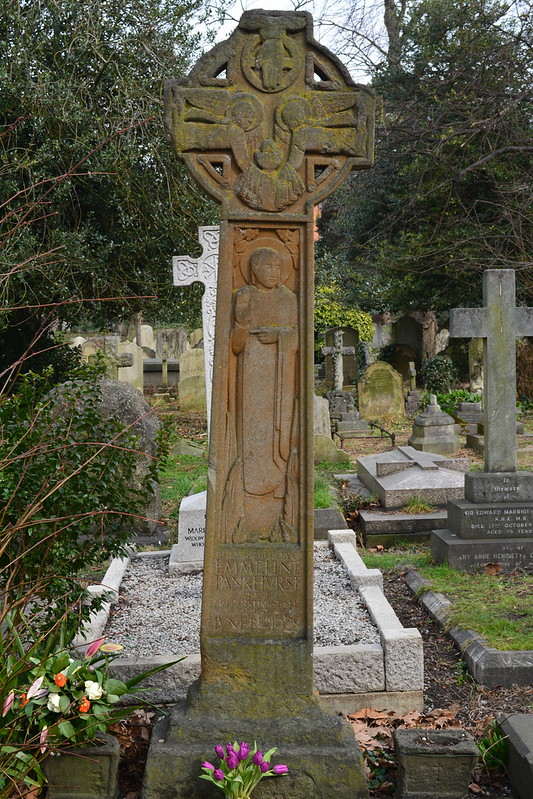 The next stretch takes you through the slightly wild and overgrown West Brompton Cemetery. Lots of family tombs, vaults and mini-mausoleums line the main route including the grave of Emmeline Pankhurst. Some of the tombs would make great entrances for a Dungeons and Dragons game!
The next stretch takes you through the slightly wild and overgrown West Brompton Cemetery. Lots of family tombs, vaults and mini-mausoleums line the main route including the grave of Emmeline Pankhurst. Some of the tombs would make great entrances for a Dungeons and Dragons game!After leaving the cemetery you walk round the perimeter of the football ground which sprawls around a bit. The outside of the complex itself is rather an ugly monstrosity at ground level and looks better from above.
The original Fulham Broadway station was a grand brown stone building but this is now closed and the station is buried within a steel and glass shopping centre. Ho hum.
Passing over the interestingly named Eel Brook Common open space, past Parson's Green station and then Parson's Green itself I felt a little deja vu as this reminded me of the Turnham Green and Chiswick Park section with small common areas with the tube line running on an embankment close by.
Putney Bridge station followed soon after and then up a flight of steps to a footpath that runs alongside the train tracks across the Thames, the tide was out, with great views down the river.
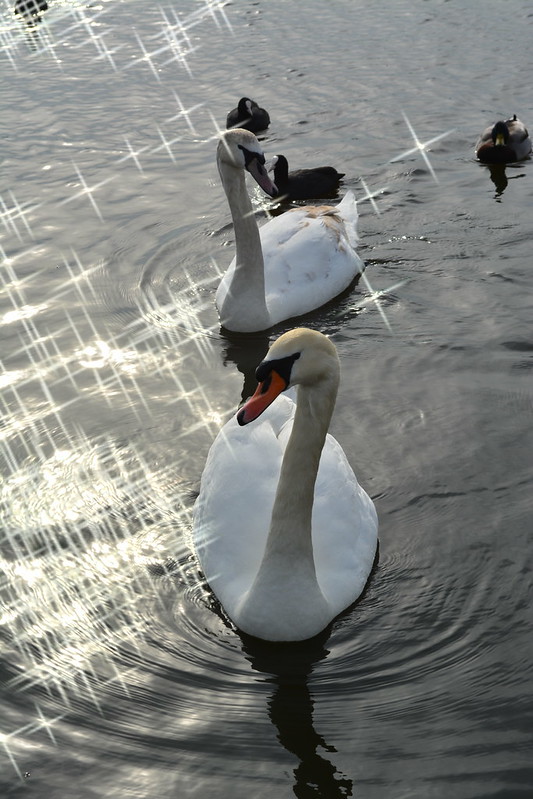 South of the river the stations change in style, becoming quaint brick built buildings with the logo of the London and South West Railway above the entrance in carved brickwork along with the date of opening (around 1889-1890) the same date as the building of the railway bridge. Past Southfields the route enters Wimbledon Park which I visited on the Capital Ring walk. The pond was full of ducks and swans being fed by young children well wrapped up against the wind that blew unobstructed across the water. But with the sun reflecting off the ripples and the bulbs and blossom on the trees this was a very enjoyable respite from the suburban streets surrounding it.
South of the river the stations change in style, becoming quaint brick built buildings with the logo of the London and South West Railway above the entrance in carved brickwork along with the date of opening (around 1889-1890) the same date as the building of the railway bridge. Past Southfields the route enters Wimbledon Park which I visited on the Capital Ring walk. The pond was full of ducks and swans being fed by young children well wrapped up against the wind that blew unobstructed across the water. But with the sun reflecting off the ripples and the bulbs and blossom on the trees this was a very enjoyable respite from the suburban streets surrounding it.Somehow the rod climbs steeply from Wimbledon Park station up Arthur Road to the last stop on this leg of the walk Wimbledon Station.
Next I will return to Turnham Green and explore the District Line as it follows the line of the Thames through the city and out the other side into the lesser known, to me anyway, reaches of Dagenham and Upminster.

